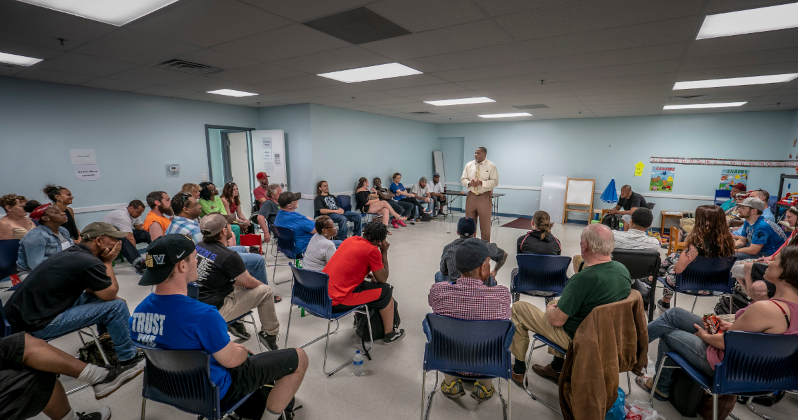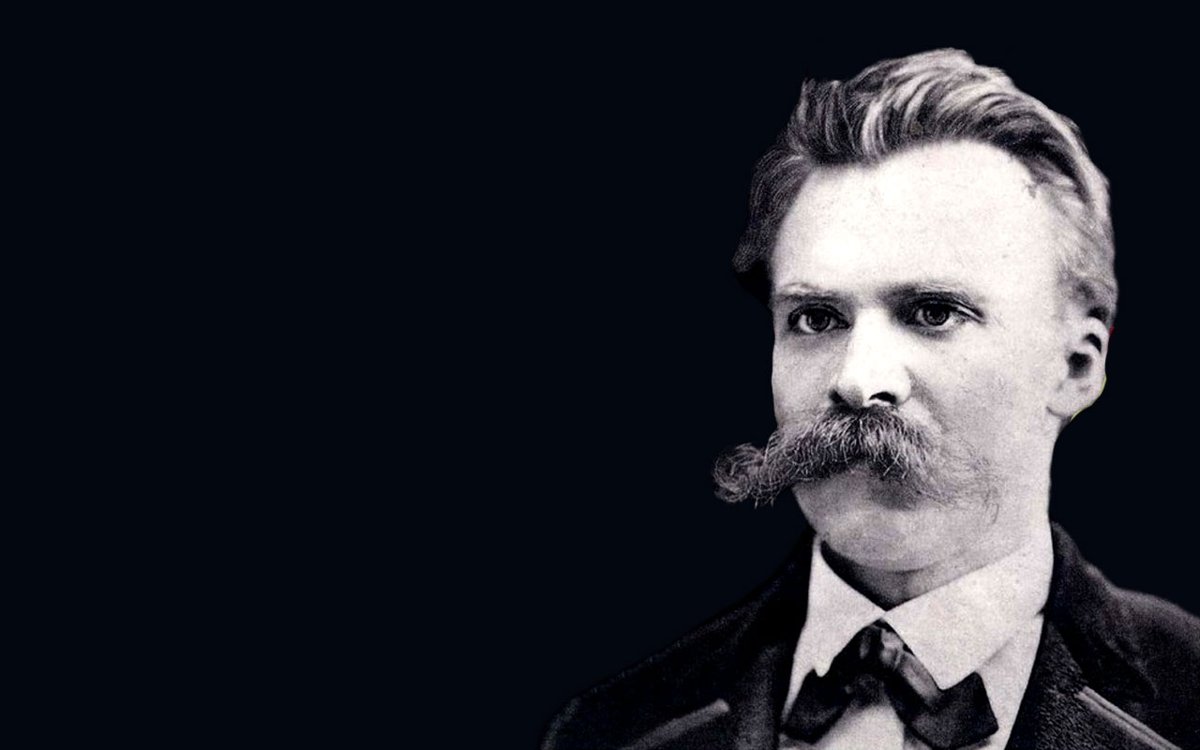“For what shall it profit a man, if he shall gain the whole world, but lose his soul?” Mark 8:36
One of the highlights of 2020 for me was reading all of the Harry Potter books to my twin grandkids. The seven books contain a total of 198 chapters, over 6,000 pages and over 1 million words. Essentially, I read four chapters a week for the entire year. I am proud to say that Annie and Ezra, my nine-year old grandkids, paid rapt attention throughout the long slog. It was a wonderful immersion experience for them during this pandemic year and a real opportunity for me to take a deep dive into some fascinating characters and to spend that much quality time with the kids.
Since the Harry Potter series revolves around the fight between darkness and light, 2020 was a perfect year to read the whole series. The forces of light (e.g. Harry, Hermione, and Dumbledore) were fighting for their individual lives and for community justice against the forces of evil (e.g. Voldemort, Death-Eaters, Dementors, Snape, and Draco Malfoy). The whole story was strangely prescient given the frightening fight for our individual lives in 2020 against the pandemic and the desperate fight for justice in our nation against racism, sexism, political tribalism, run-amok capitalism, authoritarianism, and mendacity.
In this post, I will give an overview of each of the prominent characters, and then relate their magical worlds to the real world we live in now. At the end, I will summarize the lessons I hope my grandkids learned as a result of reading the book. Let’s start with the triumvirate of the kids (Harry, Hermione and Ron) who work together to shed light on a very dark world.
WARNING: If you haven’t read Harry Potter and you are not familiar with the Enneagram, this post may be a bit difficult to comprehend. As a student of the Enneagram for many years, I found it fascinating to map each of the characters in the books to the nine enneagram types. The first sentence of each psychological description for the characters is my view of their type. All the characters are mapped into the 9 types at the end of this post. You may want to refer to that chart before you start reading. And, if nothing else – check out the lessons at the end.
Harry is a diplomat and peacemaker. He deeply trusts his friends and accepts who they are. He is very creative In his approach to solving seemingly intractable problems and is generally optimistic that his efforts will have a positive outcome. He is constantly wanting to keep the peace, particularly between Hermione and Ron, and desperately wants everything to go smoothly. Harry tends to minimize the difficulties in solving problems and can be very stubborn about doing things his way. His role in the book is to overcome the dark side, solve conflicts and bring people together. Having lost his parents at an early age, his basic fear is to be separated from and/or lose his loved ones. His over-riding mission is to create harmony in the world.
In the story, while continually pulling off heroic acts, Harry doesn’t toot his own horn or brag. He retains his humility in spite of all his fame. While he is occasionally vulnerable to emotional outbursts, particularly when he feels people (e.g. Dumbledore) are keeping secrets from him, he is usually remorseful after the fact.
Hermione is a perfectionist and reformer. She is extremely conscientious, ethical, orderly, disciplined, organized, and fastidious. She is always crusading, teaching, advocating for change, and striving to improve things. She hates making mistakes and can be overly critical and preachy. She has very high standards for excellence and thus is often frustrated and impatient. Hermione plays the wise, discerning, realistic, moralistic, and noble friend. Being “muggle-born,” she fears being defective. Her primary motivations are to be right, to improve everything, to be consistent with her ideals and to be beyond criticism.
In the story, Hermione is always the voice of reason and righteousness. For example, she initiated a campaign to end the bad treatment of house-elves. Even with the extra workload and the chaos of school, Hermione manages to stay at the top of her class. Unfortunately, she can’t help from projecting her expectation on Harry and Ron and lecturing them when she feels they are slacking off which causes them frequent irritation. Hermione respects authority and conforms to rules. She often prefers to listen to instructions instead of investigating strange occurrences.
Ron is the loyalist of the group. He is a very committed, security-oriented type. Ron is usually reliable, hard-working, and trustworthy. He anticipates problems and fosters cooperation, but can easily become defensive, evasive and anxious. Ron is cautious, indecisive, reactive and seems to complain continually. He is full of self-doubt and is suspicious about the motivations of others. Ron is a courageous champion for Harry and Hermione. His basic fear is to lose their love and support. His primary motivation is to establish security, certainty, and the approval of others.
In the story, Ron is consistently loyal to Harry, Hermione and his family – the Weasleys. He hangs on tightly to these relationships and feels safest and most highly valued when he is hanging out with them and is in good stead with them. Ron let his fears get the best of him when he abandoned Harry and Hermione in the forest during their search for Horcruxes. His insecurities about his role and worth in the group caused him to take an action he later regretted. Ron is the skeptic on their team, but he is very sensitive and can be counted on to stick up for his friends in a crisis. He has a happy-go-lucky attitude, but struggles to make decisions under stress. Ron provides a great deal of comedic relief, doesn’t worry excessively about the future, and goes with the flow.
The primary sources of light from the adults in the books comes from Dumbledore, Hagrid, and Professor McGonagall.
Dumbledore is the investigator. He is the reclusive, head master of Hogwarts and is constantly searching for deeper meaning. Dumbledore is extremely alert to any nuance, deeply insightful into people, and constantly curious about what’s going on in people’s lives. He is able to concentrate and focus in the most stressful and challenging circumstances and is able to demonstrate complex ideas and skills. Dumbledore is very independent, inventive, intense, and detached. He can become preoccupied with his thoughts and imaginary constructs. He can be a bit eccentric and removed. Dumbledore is the visionary pioneer who sees the world in entirely fresh ways. His basic fear to be to useless or incapable of solving a problem.
In the story, Dumbledore guides Harry in his war against the dark side. Dumbledore always seems to know what’s going on in the moment due to his highly developed sense of observation. He notices everything. Dumbledore is extremely curious and inquisitive and is constantly searching for deeper meanings behind events. He has an objective view of reality as well as a firm sense of the big picture. Sadly, in his relationship with Harry, Dumbledore tends to prioritize facts and truths over feelings. That may explain why he doesn’t seem to feel guilty about hiding facts from Harry for the greater good. Dumbledore is so protective of his space and his life history that Harry discovers more about him after his death than when he was alive. While Dumbledore had few personal attachments, he was very fond of Harry and trusted Professor McGonagall. Unfortunately for Harry for most of the story, he also trusted Snape.
Hagrid is the helper and caregiver. He is empathic, authentic, and warm-hearted. Hagrid is almost always friendly, generous, and self-sacrificing, but can at times be overly sentimental. He is very protective and possessive of his pets, but completely unselfish and unconditional in serving others. His basic fear is be unwanted and unloved. He is primarily motivated by his need to be needed and to express his love for others.
In the story, Hagrid serves as a reliably supportive figure to Harry from the moment he arrived at the Dursleys’ door. Hagrid takes Harry shopping for his magic supplies, initiates him to the wizarding world, and cares deeply for Harry throughout his life. While Hagrid doesn’t believe in boosting egos, he constantly offers genuine compliments and points out the best qualities of Harry, Hermione and Ron. Hagrid is always eager to be useful because he thrives on being needed. One of Hagrid’s most endearing attributes is his care and nurture of shunned creatures like giant spiders and baby dragons even though they are dangerous.
Professor McGonagall is also a helper/care giver type, but she expresses her helping orientation in very different ways than Hagrid. In the story, McGonagall is a professor of Transfiguration at Hogwarts, the head of Gryffindor House, and Dumbledore’s Deputy Headmistress.
Now let’s turn to the dark side and to the adult characters who manifest the evil roles. There is a whole cast of minor players and dozens of death-eaters and dementors (probably all Republicans), but I will limit the character analysis to the lead actors. Here is a brief overview of Voldemort, Professor Umbridge, and Snape.
Voldemort is an unhealthy achiever in the worst sense. He is self-assured, extremely ambitious, very competent in the Dark Arts, and highly driven for advancement toward ruling the world. Voldemort is very competitive. He needs to impress others with his superiority, does whatever it takes to preserve the illusion of his superiority, and maliciously ruins others’ happiness. He is exploitative, narcissistic, vindictive, delusional , devious, deceptive and opportunistic. Instead of recognizing his own vulnerabilities, Voldemort gets so immersed in his own reality that he becomes totally destructive. His basic fear is being worthless. His primary motivation is not only to distinguish himself from others, but also to be affirmed and admired by his followers. (Remind you of any recent leaders you have known?)
In the story, Voldemort is the archenemy of Harry. In his attempt to murder Harry when he was a child, Voldemort kills his parents instead. As a result of the battle with Voldemort, Harry is left with a scar on his head the shape of a lightning bolt. Voldemort is obsessed with blood purity and wants to rid the wizard world of Muggle or non-magical heritage. He is the leader of the Death Eaters, a group of evil witches and wizards dedicated to establishing Voldemort as the supreme leader.
Professor Umbridge is an unhealthy fighter and challenger. She is overly-confident, assertive, decisive, ego-centric and domineering. Umbridge desperately tries to control her environment through confrontation and intimidation. Her basic fear is to be controlled by others. Her primary motivation is to dominate and control.
In the story, Umbridge plays the role of a villain and bully who inflicts pain on people. Professor Umbridge is very abrasive and completely stuck in her own warped morals. She tells herself that she is heroic by challenging what she believes is wrong. Unfortunately, her sense of right and wrong are terribly convoluted. She is one of those leaders who is very decisive and very wrong.
Whereas Dumbledore was a very healthy investigator and Ron was a moderately healthy loyalist, Snape was a very unhealthy combination of both. Snape isolates himself and hoards knowledge. His apparent loyalty to Voldemort is driven by his need for understanding and love, but in a major plot twist, it turns out that his real loyalty is to Dumbledore. He is the quintessential cynic and classic double agent.
Very briefly, here are brief descriptions of some of the minor players on the side of Light: Ginny, Luna, Fred, George, and Sirius Black.
Ginny is a healthy challenger and fighter. In the story, she is strong, forceful, competitive, and self-assured. As the youngest girl in the family, Ginny learned to stand up to her brothers. She participated in many battles alongside her friends and family and played a critical role on the Quidditch team. Ginny is in love with Harry and is fiercely loyal to him. She stood by him when others questioned his sanity.
Luna, one of my favorite characters, is an individualist and artist. She is very self-aware, sensitive, and reserved. Luna is emotionally honest, creative, and inspired; but she can also feel self-conscious, vulnerable, and exempt from ordinary ways of living. Her basic fear is to feel insignificant. Her primary motivation is to express her individuality and surround herself with beauty. She is the bohemian of the group.
In the story, Luna bonds with Harry through their ability to see magical creatures that can only be observed by people who have seen death. She listens empathically to Harry and becomes one of his closest friends. Luna expresses her emotions with ease and freely exclaims beliefs for which she is readily ridiculed. Her eccentricities annoy Hermione, but Luna is very smart, intuitive, and reflective – often knowing what to do and what to say without any assistance from others. Luna consistently finds practical ways to help Harry.
Fred, George and Sirius Black are the enthusiastic adventurers in the cast. They are extroverted, optimistic, versatile and spontaneous. Fred and George, in particular, are playful and high-spirited with many talents – they are entertainers. They are always seeking new and exciting experiences, but can become easily distracted. All three are impatient and impulsive, but Serius Black is more of a realist. Their basic fear is to be deprived. Their primary motivation is to maintain their freedom and happiness and to pursue possibilities.
In the story, Fred and George are notorious for their pranks at Hogwarts. They always try to lighten the mood. Fred often makes jokes to help his audience feel better. George is able to make fun of himself even when he has suffered significant injuries. Even though Fred and George are usually engaged in some playful activity, they are still able to understand the seriousness of situations. Indeed, they joined Dumbledore’s Army to learn critical spells and agreed to impersonate Harry to keep him safe. They were some of the first ones to fight at the Battle for Hogwarts. While they dropped out of Hogwarts to establish their “joke” store, they could still be counted on to deliver. Even Hermione was impressed by their clever ingenuity. Serius Black, on the other hand, could be wild and unhinged. He is driven by his pursuit of the unknown – wanting to explore, to push the boundaries of what is expected of him, and to question authority. Sirius takes the role of a darker, more tortured soul who chooses to be a bit reckless. Still, Harry loved him as his Godfather.
For readers who are familiar with the Enneagram, here is how the major characters map into the nine different types:
|
Enneagram Type |
Healthy Example |
Unhealthy Example |
|
Reformer/Perfectionist (1) |
Hermione |
|
|
Helper/Caregiver (2) |
Hagrid, Dobby, Professor McGonagall |
|
|
Achiever (3) |
Hermione |
Voldemort and Draco, Percy |
|
Artist/Individualist (4) |
Luna |
|
|
Investigator (5) |
Dumbledore |
Snape |
|
Loyalist (6) |
Ron, Neville, Lupin |
Snape |
|
Enthusiast/Possibilist (7) |
Fred, George, Sirius Black |
|
|
Challenger/Fighter (8) |
Ginny |
Professor Umbridge |
|
Diplomat/Peacemaker (9) |
Harry |
|
Applying Harry’s magical world at Hogwarts to 2020 and our current situation is actually quite simple. Succinctly stated: old, white men are dumping their problems unto the children in our world and expecting them to magically solve them. Enough said.
Here are some of the lessons I’m hoping my grandkids will take away from this immersion experience.
- The world can be a very dark place AND there are many positive forces and sources of light.
- People are complex. Each of us is hard-wired by a certain character type AND there is a range of healthy and unhealthy behaviors associated with each type.
- We can make conscious choices about who we are independent of our hard-wired type.
- Once we understand our particular type, we can make effort to make healthy choices within that type and shift/grow to a healthier state.
- Once we have optimized our health in our given type, we can transfer skills across types.
- We are not limited by our type – we are freed by understanding it.
- Being aware of our own type and noticing the character type of other people can help us build stronger and deeper relationships.
- Accepting our own type makes it easier to accept other types.
- We can learn from and leverage the differences of all types.
- People can grow; truth can triumph; Light can overpower Dark.
Hopefully, these psychological descriptions of the Harry Potter characters will give you a deeper appreciation of each person. Also, if you are somewhat interested in the Enneagram, these characters may bring the types more alive to you as you observe the behavioral manifestations of their hard-wiring. Finally, you may see how characters, through great effort, are able to become healthier and healthier as they deal with life’s challenges; and perhaps, you will be inspired to do the same. I’m hoping more people will learn the lessons that the Harry Potter books teach for those who can process them through the lens of the enneagram and that 2021 and beyond will shed more and more light on the dark days of 2020. May it be so.
Also published on Medium.




Amazing analysis! Thanks my friend